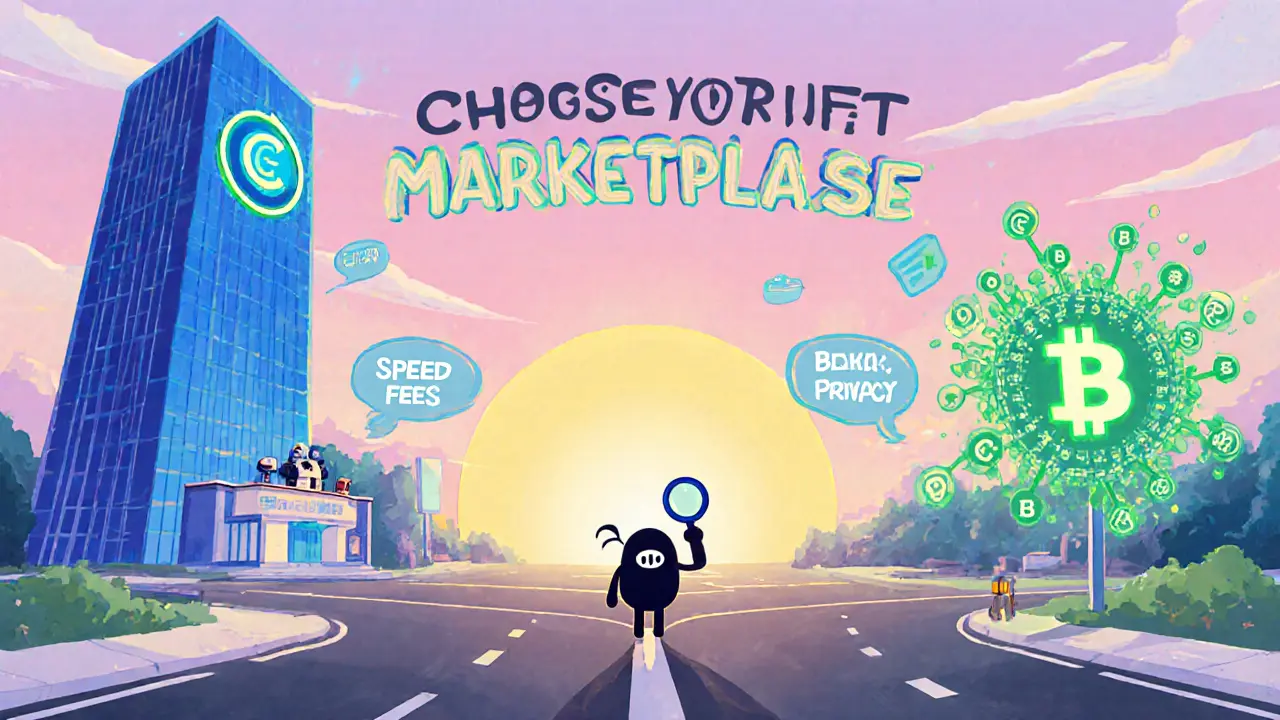NFT marketplaces Guide and Insights
When exploring NFT marketplaces, online platforms where creators list tokenized digital assets for sale or trade. Also known as digital collectibles exchanges, they serve as the bridge between NFTs, unique blockchain‑backed tokens representing art, music, or in‑game items and crypto wallets, software or hardware tools that store private keys and enable transactions. In short, an NFT marketplace lets you browse, buy, sell, and auction these one‑of‑a‑kind tokens while your wallet handles the money side.
Behind the scenes, smart contracts, self‑executing code on the blockchain enforce ownership, royalties, and transfer rules. This means creators earn a cut every time their work changes hands, and buyers get provable proof of authenticity. The interplay of smart contracts and marketplaces also shapes gas fees, transaction speed, and the overall user experience. For example, a platform that runs on a high‑throughput chain can offer near‑instant trades, while one stuck on a congested network may charge hefty fees.
Key factors to consider when picking a marketplace
First, look at the token standards supported. Most platforms accept ERC‑721 or ERC‑1155 tokens on Ethereum, but newer venues embrace Solana’s Metaplex, Polygon’s extensions, or Binance Smart Chain’s BEP‑721. The standard determines how metadata is stored and how easily the asset moves between chains. Second, check wallet compatibility – a marketplace that works with MetaMask, Phantom, or Trust Wallet lowers friction for most users. Third, examine royalty structures; some sites let creators set flexible percentages, while others lock them at a fixed rate. Finally, community reputation matters: active forums, transparent fee tables, and clear security policies signal a healthier ecosystem.
All these pieces – NFTs, wallets, smart contracts, token standards, and community – form a network of relationships that make NFT marketplaces functional. Understanding how they link helps you avoid scams, minimize fees, and spot platforms that align with your goals, whether you’re a collector hunting rare art or a game developer launching in‑game items. As the space matures, we see more cross‑chain bridges, curated drops, and AI‑driven recommendation engines, all built on the same foundational entities.
Below you’ll find a hand‑picked collection of articles that dive deeper into specific platforms, tokenomics, airdrop alerts, and security tips. Use them as a toolbox to navigate the fast‑moving world of digital collectibles with confidence.
Centralized vs Decentralized NFT Marketplaces: Pros, Cons & Comparison
Explore the differences between centralized and decentralized NFT marketplaces, covering fees, speed, security, privacy, and future hybrid models to help you choose the right platform.
read more

